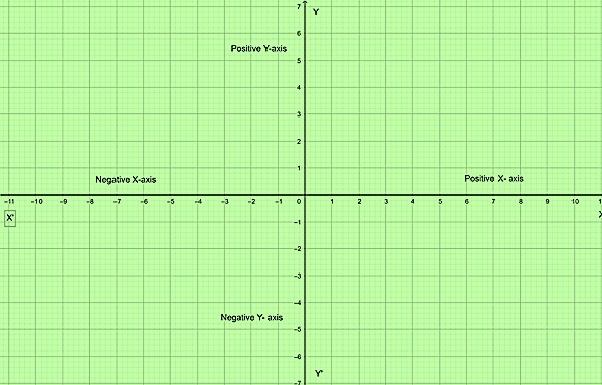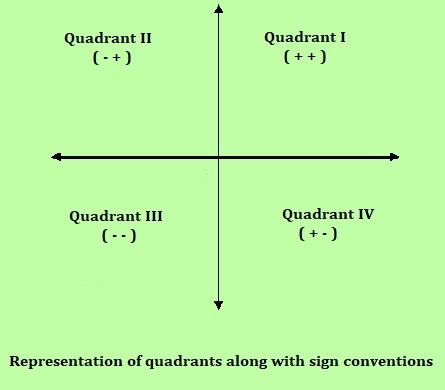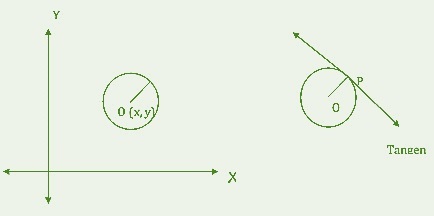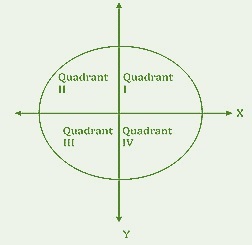
 Data Structure
Data Structure Networking
Networking RDBMS
RDBMS Operating System
Operating System Java
Java MS Excel
MS Excel iOS
iOS HTML
HTML CSS
CSS Android
Android Python
Python C Programming
C Programming C++
C++ C#
C# MongoDB
MongoDB MySQL
MySQL Javascript
Javascript PHP
PHP
- Selected Reading
- UPSC IAS Exams Notes
- Developer's Best Practices
- Questions and Answers
- Effective Resume Writing
- HR Interview Questions
- Computer Glossary
- Who is Who
Quadrant
Introduction
A cartesian plane is a two-dimensional plane which is part of a coordinate system. The concept of a cartesian plane is mostly used in Euclidean geometry & algebra. In a two-dimensional plane system, any point can be specified by x-coordinate y-coordinate. Axes on the cartesian plane divided it into 4 equal & infinite parts called quadrants. These quadrants are named quadrant I, quadrant II, quadrant III & quadrant IV. In the case of a circle, a quadrant can be represented by a quarter of the circle. So let's study the topic quadrant of the cartesian plane & circle in brief.
Cartesian plane
A cartesian plane can be defined as a plane formed due to the intersection of two coordinate axes which are mutually perpendicular to each other. The horizontal axis is the x-axis & vertical axis is known as the Y-axis. X-axis & Y-axis intersect at a point known as origin & which is denoted by the symbol O.

Cartesian plane with positive & negative x & y-axis
Components of the cartesian plane
A cartesian plane has three major components axes, origin & quadrants. These components are essential when we are going to locate any point on a cartesian plane. Components of the cartesian plane are given as follows
Axes
The horizontal & vertical lines in the cartesian plane are known as axes. The horizontal axis is known as the X-axis & the vertical axis is known as the Y-axis.
Origin
The point where two axes cross each other is known as the origin. It is denoted by O. The coordinates of the origin are (0,0).
Quadrants
When the X-axis & Y-axis are perpendicular to each other, they divide the cartesian plane into 4 equal parts. These parts are known as the quadrants.
Quadrants of cartesian plane
When X-axis & Y-axis intersect each other, they divide the cartesian plane into 4 equal infinite parts. These parts are known as the quadrants. These quadrants are denoted as Quadrant I, Quadrant II, Quadrant III & Quadrant IV.
Quadrant I
The first quadrant lies in the upper right-hand corner of the cartesian plane. In this quadrant both x-coordinate & y-coordinate are positive.
Quadrant II
The second quadrant lies in the upper left-hand corner of the cartesian plane. In this quadrant x-coordinate is negative & y-coordinate is positive.
Quadrant III
The third quadrant is lie in the lower left-hand corner of the cartesian plane. In this quadrant both x-coordinate & y-coordinate are negative.
Quadrant IV
The fourth quadrant lies in the lower right-hand corner of the cartesian plane. In this quadrant x-coordinate is positive & y-coordinate is negative.

Properties of the quadrants in the cartesian plane
The right side of the X-axis is considered positive & the left side of the X-axis is considered negative.
Similarly, the upper Y-axis is considered positive & the lower Y-axis is considered negative.
The quadrants & negative & positive axis plays an important role in plotting graphs.
The value of x is called x-coordinate or abscissa. It denotes the distance of that point from the y-axis.
Similarly, the value of y is called y-coordinate or ordinate. It denotes the distance of that point from the X-axis.

Circle
In the cartesian plane, a circle is the locus of points which moves in a plane keeping a constant distance from a given fixed point in the same plane.
Quadrant of a circle

Quadrants are the four quarters in the cartesian system. Each part is called a quadrant. In the case of a circle, the quarter of a circle is known as the quadrant. Each quarter of the circle measures 900. These four quarters add up to the total of 3600. When we join this quadrant, we get the shape of a circle. The quadrants are named quadrant I, quadrant II, quadrant III & quadrant IV as shown above figure.
Different formulae of circular quadrant
Area of a quadrant =$\mathrm{\frac{1}{4}Ã?r^2}$
Circular boundary of a quadrant =$\mathrm{\frac{1}{4}Ã2?r}$
Perimeter of a quadrant =$\mathrm{\frac{?r}{2}+2r}$
(Note: While calculating perimeter, the entire boundary should be added two times the radius of the circular boundary. Because the quadrant consists of two circular parts & two straight lines whose length which is equal to the radius.)
For example, Find the area of a quadrant of a circle with a radius of 10m. Assume ?=3.141.
Solution The formula for calculating the area of quadrant is given by,
Here, r=10,?=3.141
$$\mathrm{A=\frac{?r^2}{4}=\frac{3.141Ã(10)^2}{4}=78.525m^2.}$$
Ex.2 Find the perimeter of the quadrant of a circle with a radius of s 11 cm.
Solution: Here, r= 11 cm, the formula calculating the perimeter of the quadrant is given by,
$$\mathrm{P=11Ã\frac{3.141}{2}+2=19.276 cm}$$
Properties of the quadrant of the circle
Quadrant 1 is the upper right section of the circle. In this quadrant x-coordinate & y-coordinate both are positive. The angles in the quadrant range from 00 to 900.
Quadrant 2 is the upper left section of the circle. In this quadrant x-coordinate is negative & y-coordinate is positive. The angles in the quadrant ranges from 900 to 1800.
Quadrant 3 is a lower left section of the circle. In this quadrant x-coordinate & y-coordinate both are negative. The angles in the quadrant ranges from 1800 to 2700.
Quadrant 4 is a lower right section of the circle. In this quadrant x-coordinate is positive & y-coordinate is negative. The angles in the quadrant ranges from 2700 to 3600.
Conclusion
This tutorial covers the topics cartesian plane, quadrant in cartesian plane, circle & quadrant of a circle along with their properties.
FAQs
1. Give some applications of the cartesian plane?
The cartesian plane is used to determine the distance between two points, the ratio of two dividing lines, the midpoint of the intersecting lines.
2. Does (2, -3) lie in the fourth quadrant?
Yes. (2 -3) lies in the fourth quadrant. Because the value of x is positive & value of y is negative. Therefore, this point should lie in the fourth quadrant.
3. Is the third quadrant positive or negative?
No. x-coordinate & y-coordinate in third quadrants are negative.
4. What is a unit circle?
A unit circle is a circle having a radius of one unit. Mostly this circle is represented in cartesian & coordinate planes. This circle helps for finding values of trigonometric ratios.
5. What is the difference between quadrants & sectors of a circle?
A quadrant is a one-fourth of a circle having an angle of 900. And a sector is a division of a circle having any angle.

